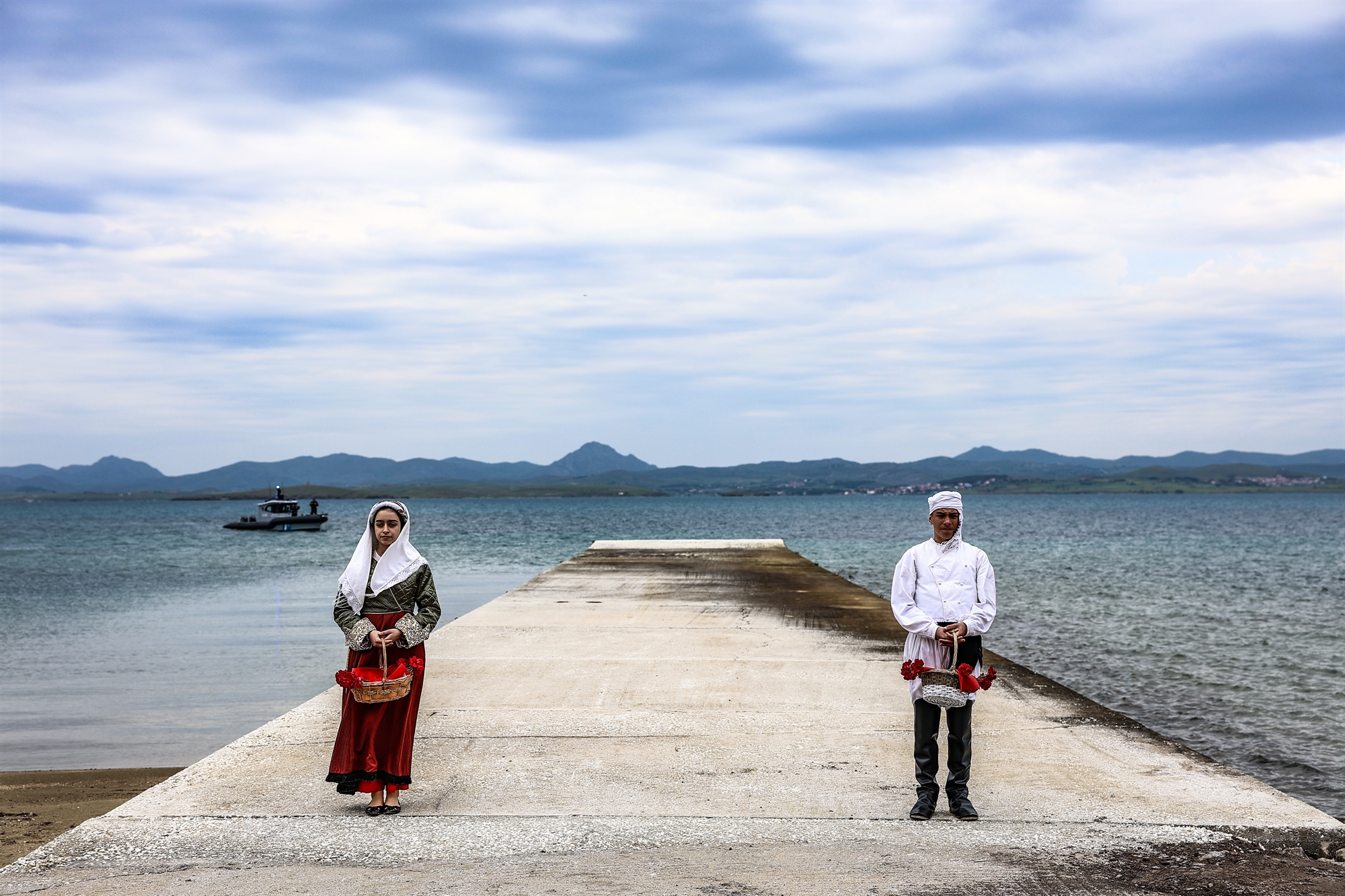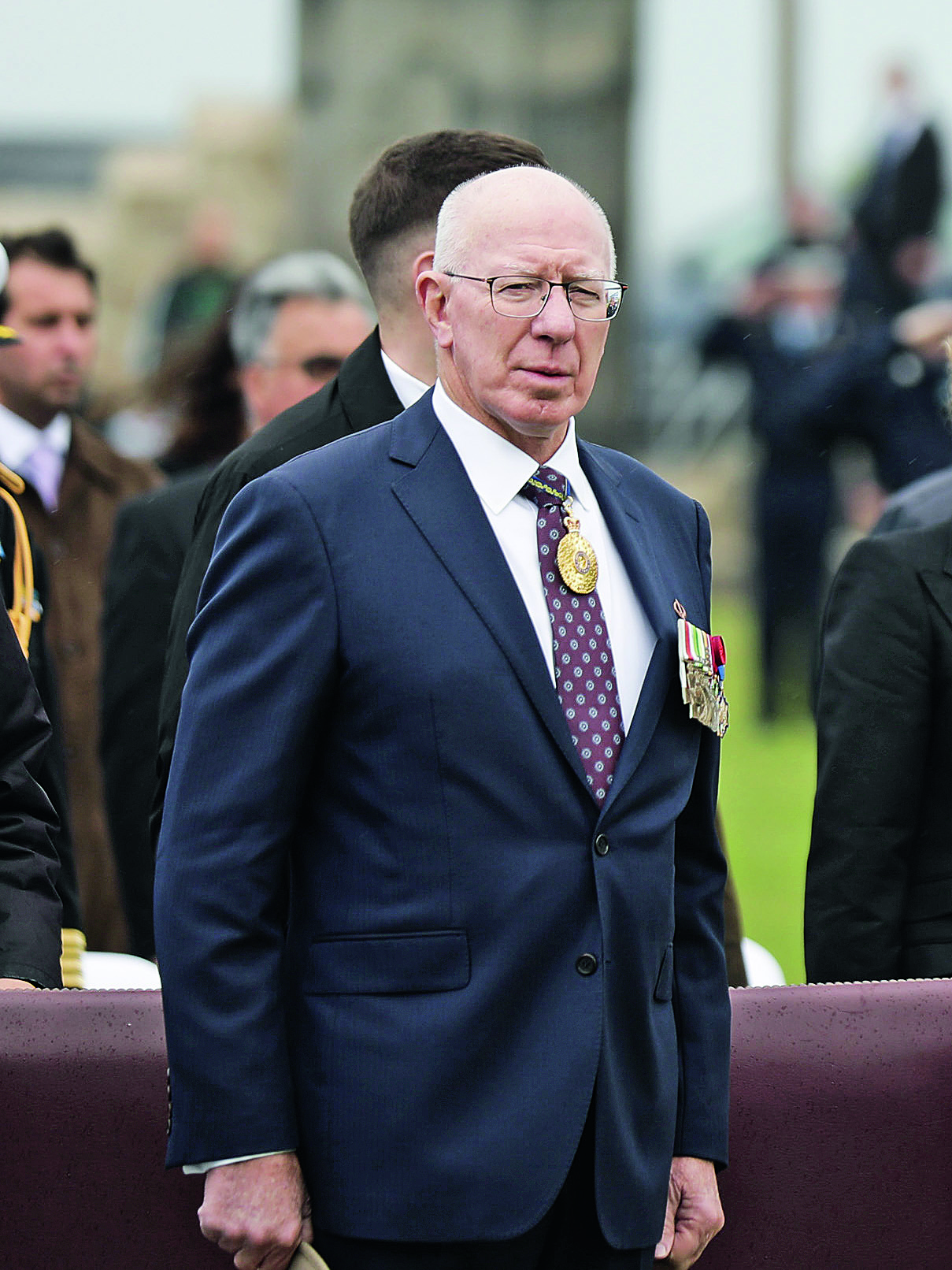Remembering Gallipoli: ‘Their sacrifice made them our boys’
Greek president, Australian governor-general attend ceremony for WWI ANZAC casualties

‘Digger’ C.A. was just 21 years old when he died on June 12, 1915, according to his tombstone, one of hundreds at the Commonwealth War Cemetery on the eastern Aegean island of Limnos, which represents a very important chapter of modern history, as the flags waving at its entrance testify.
The tranquil cemetery is the final resting place of 885 Commonwealth soldiers who fell here in World War I; among them are 98 Australians and 47 New Zealanders of the Australian and New Zealand Army Corps, who took part in the Gallipoli Campaign. Because of its geographical position, Limnos played an important role in the campaign as an assembly, preparation and training location, but also as a hospital base for the thousands of Allied soldiers who took part in the audacious attempt to take control of the Ottoman straits by attempting to occupy the Gallipoli peninsula by sea – a plan that ended in complete failure.
Those thousands of young men who were born in the southern hemisphere and took their last breath on this small Aegean island were commemorated last Wednesday. It was a moving ceremony, presided over by Greek President Katerina Sakellaropoulou and her Australian counterpart, Governor-General David Hurley, who was on his first official visit to Greece, with his wife, Linda.
“Limnos was crucial to the operation and the port of Moudros was a base for the Allied forces,” said Sakellaropoulou, noting that the locals, who were not accustomed to living with strangers, opened their arms to these young men, many of whom were traveling abroad for the first time in their lives. “The way residents welcomed and embraced them was heartfelt and, as a result, strong bonds were formed that have still left an imprint to this day,” she added.
The Greek president also spoke of the adverse conditions on the battlefield at the time. “It was a vicious, bloody war. The testimonies we have describe absolute horror. The teams that took part in the Gallipoli landing were completely exposed, without any cover. The combined ANZAC forces were facing an invisible enemy who knew the terrain intimately and could take advantage of every aspect of it,” she stressed.
Those that survived were brought to the makeshift hospital in Limnos (also known as Lemnos). “Their sacrifice made them our boys and we cherish their memory with sensitivity and gratitude,” added the Greek president.
‘The way residents welcomed and embraced them was heartfelt and, as a result, strong bonds were formed’
The ‘ANZAC legacy’
“ANZAC Day is a day when Australians take pause to remember and reflect on the past. For me, this day stirs memories of loss and deep-rooted emotions. Perseverance, fortitude, a spirit of self-sacrifice and camaraderie: These are the traits we recognize as the ANZAC legacy and which also characterize the Greeks and the people of Limnos,” said the Australian governor-general in his address at the ceremony, noting that his wife’s great-uncle was among those who had been treated at the Limnos hospital.
Hurley and Sakellaropoulou laid a wreath at the memorial after the service, as did the ambassadors of the UK, Matthew Lodge, and Canada, Anna-Karine Asselin, New Zealand’s deputy ambassador to Rome, Daniel Wai Poi, the Italian ambassador to Greece’s defense attache, Colonel Efrem Moioli, and the president of the Hellenic Red Cross Limnos branch, Dimitrios Achiladellis.
Telling the story
The story of the ANZAC contribution to the Gallipoli campaign, which takes us back 108 years, is about to become more widely told thanks to the Memory Trail and the Lemnos Digital Trail website. The idea was first brought up in April 2018 by the Melbourne-based Lemnos Gallipoli Commemorative Committee, while the Australian government approved a budget of 4.9 million Australian dollars for the projects in October 2022. The Memory Trail will consist of 17 stops, all intrinsically linked to this chapter of history, while the route and the information relating to it will also be available on the website.
The promising project was officially inked at Moudros pier, an iconic location that is dedicated to the ANZAC fallen, as well as to the Australian medics, nurses and other personnel who served on the island in World War II.
“We must all support the effort to showcase this part of our history,” said Stelios Mantzaris, the president of the island’s hoteliers and of the Lemnos Friends of ANZAC Association, which was founded in 2014.
Limnos is also a holiday destination for many Australians who are interested in learning the history or who had ancestors who fought in the campaign.
“It is important that we strengthen the bond with all the countries that were in the Commonwealth at the time and sent soldiers here,” Mantzaris told Kathimerini, adding that he recently had the opportunity to discuss the issue with Indian officials with the aim of confirming how many soldiers were sent from that country and how many are buried on Limnos.

Involvement in the war ‘shaped our present values’
“The Gallipoli Campaign was our first overseas operation as a national force and in many ways it shaped our national consciousness and the way we saw ourselves,” Australian Governor-General David Hurley told Kathimerini in a separate interview.
As a result, the anniversary of the campaign, on April 25, has been named ANZAC Day and is one of the biggest national holidays in Australia. It took place just a few years after the federal state of Australia was established and some 50,000 soldiers from that country took part in the campaign; 8,700 died in action and another 19,000 were wounded trying to occupy the Gallipoli peninsula and open the Dardanelles Strait to the Allied forces.
“Our involvement in World War I and World War II shaped our present values and character traits, such as bravery, which we maintain to this day,” noted Hurley, a former general with first-hand experience of military operations, including in Somalia in the 1990s.
“When we are in situations like that we are fully engaged, giving it our best,” he said.
Those months that the Australian troops spent on Limnos created the foundations for a bilateral friendship that endures to this day. “They had significant interaction,” Hurley noted.

“The first Greek immigrants started to arrive in our country in 1929, while we had more mass arrivals after World War II,” said the 70-year-old governor-general, who grew up in an industrial town and had Greek friends as a child. “I often visit your country privately, and especially Corfu, where I have some very close friends,” he added.
Greece was, in fact, the first trip abroad he ever took, at the age of 18. “I had dreams of becoming an archaeologist, but it wasn’t possible.”
Hurley is optimistic about the Memory Trail initiative and believes that it will become an attraction for Australian travelers. “Australians are used to long flights,” he said, dismissing the distance they would have to cover to get to Limnos. We have a different sense of distance; when I was in the military, I personally had to travel many kilometers on a daily basis.”
Apart from tourists, Greece also seems to be attracting investors from Australia. “Just this past October, [Greece’s] Public Power Corporation [PPC] reached a deal with Australia’s Macquarie Asset Management for the acquisition of 49% of the Hellenic Electricity Distribution Network Operator [DEDDIE],” noted Hurley, stressing that Australian investors are very interesting in renewable energy sources.
Indeed, Cero Development, which belongs to the Macquarie Group, has increased its investment in Greece in photovoltaics, strengthening its existing portfolio.





